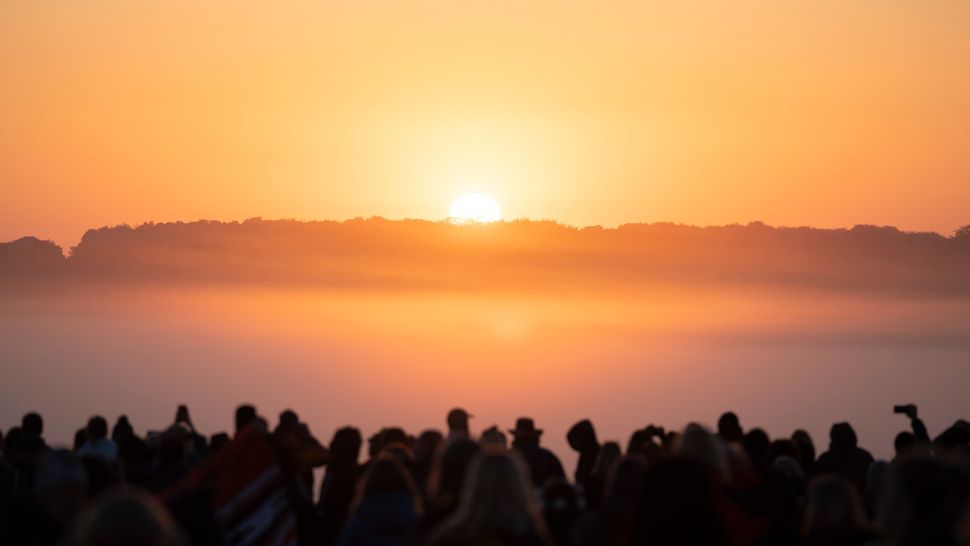Another year, another summer solstice.
The northern hemisphere celebrated the 2024 summer solstice on June 20, while the southern hemisphere rang in its winter solstice. Because the solstices occur when Earth’s poles are tilted either toward or away from the sun, the northern and southern hemispheres celebrate opposite solstices on the same date.
As is tradition, revelers in England gathered at sunrise at the ancient Stonehenge monument to revel in the longest day of the year. But around the world, people celebrate the solstice in myriad ways, as seen in the photos below.
Every year, thousands of revelers gather at sunrise at the Stonehenge monument in Wiltshire, England to celebrate the solstice. The roughly 5,000-year-old circle of stones was built in such a way that the sun aligns with the monument during sunrise on the summer solstice and at sunset on the winter solstice.
Related: June solstice 2024 brings changing seasons to Earth on June 20 — What to know

Thousands of people gathered at the monument even before the sun rose this morning (June 21) to celebrate the solstice. (The Stonehenge festival began on solstice day and stretched into today.)
As the sun rose, revelers at Stonehenge celebrated with dancing, Pagan rituals and music.
Humans have been celebrating the solstices at Stonehenge for thousands of years. This year, 15,000 people were allowed into the site.
For Stonehenge and the rest of the Northern Hemisphere, the summer solstice marks the longest day and shortest night of the year, a cause for celebration for many, including the people seen below.
Far from Stonehenge, yoga students in Sydney, Australia celebrated the solstice (in this case the winter solstice, due to Sydney being in the Southern Hemisphere) with a session on famous Bondi Beach. Aside from being the date of the solstice this year in Australia (which is across the International Date Line), June 21 was also the International Day of Yoga.
In Bolivia, people celebrated the winter solstice in traditional garb to ring in the beginning of the year of the Andean Amazon calendar, also known as the Aymara calendar.
Space.com’s Daisy Dobrijevic caught this picture of the midnight sun while traveling on the southern coast of Norway. The midnight sun is a natural summertime phenomenon in which the sun never sets below the horizon due to Earth being titled toward our star, peaking around the solstice.
“The midnight sun illuminated the tips of the mountain peaks as we sailed into the Trollfjord,” Dobrijevic said. “The contrast between the darker blue light and the golden light above was simply beautiful.”
In London, local residents in the Borough of Hackney gathered to take in the sunrise as the sun rose through trees at Hackney Marshes.
In Macedonia, the sun rose over the Bronze Age archaeological site of Kokino during the summer solstice, illuminating the ancient ruins as it has since they were built over 4,000 years ago. Kokino is believed to be among the oldest astronomical observatories in the world.
Next year, the summer solstice will occur on June 20, 2025. But we have another solstice to look forward to this year: the winter solstice occurs on Saturday, Dec. 21, 2024, marking the time at which Earth’s north pole points farthest away from the sun.